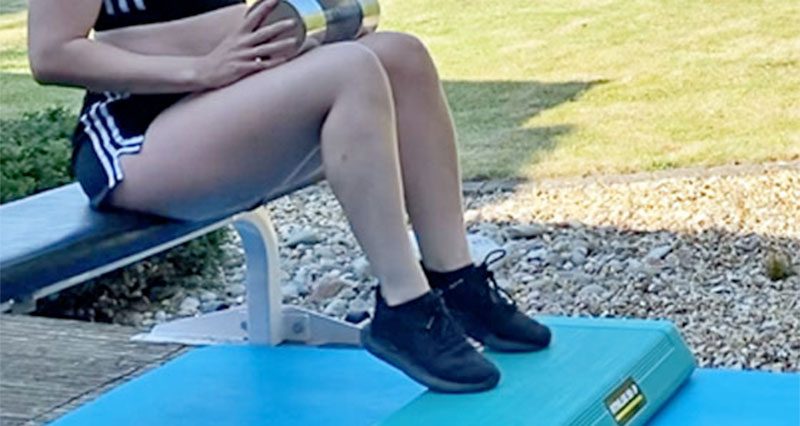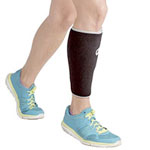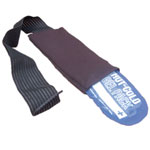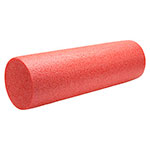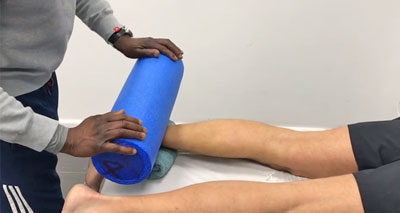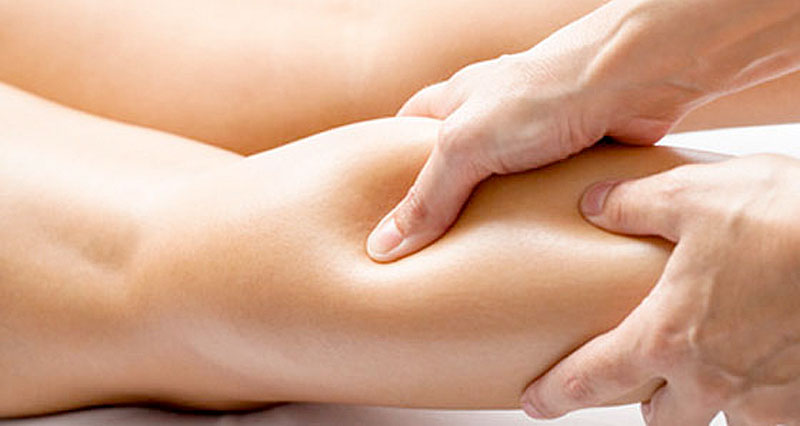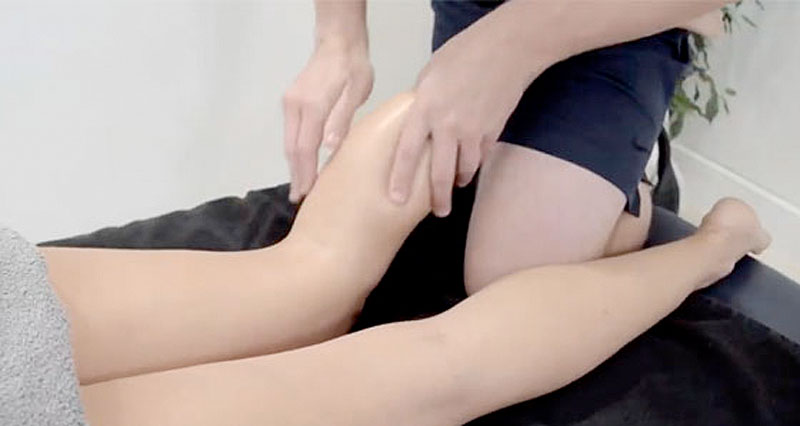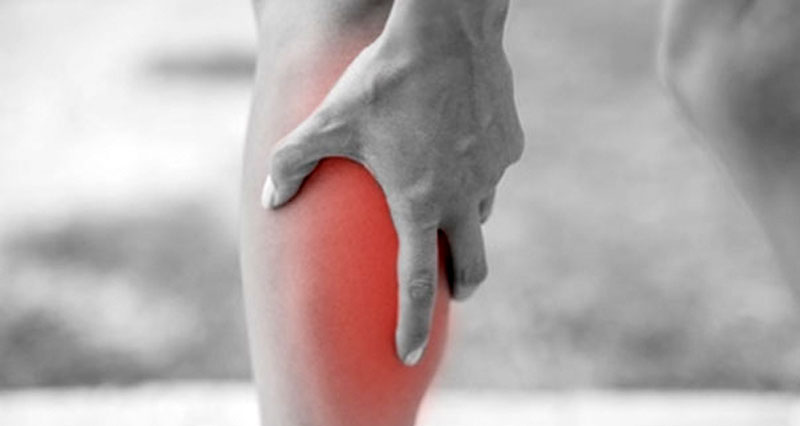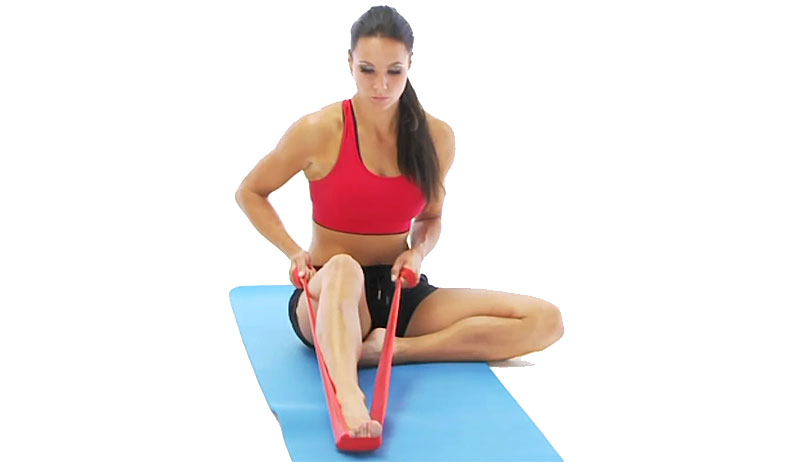Example of a rehabilitation program for a lower leg or calf muscle contusion.
Below is an example of rehabilitation guidelines. We recommend seeking professional advice before starting any rehabilitation.
Aims of rehabilitation
- Control pain and swelling.
- Maintain and improve both mobility and flexibility.
- Restore muscle strength.
- Return to full fitness.
Grade 1:
Rest, Ice, Compress and Elevate (R.I.C.E.) immediately. Use a compression bandage or heat retainer until you feel no pain.
Gentle calf stretching – hold for 30 secs, repeat 5 times daily.
Calf raise exercises – 4 sets of 10 repetitions 3 times a week.
Gradually build up the weight to strengthen the calf muscles.
Ease down your training for a week or two but no need to stop unless there is pain.
Grade 2:
Ice, compress, elevate, use crutches for 3 to 5 days.
Improve mobility with ankle mobility exercises (as long as it is not painful).
From day three (not before) apply heat (hot water bottle, hot baths, see a specialist for ultrasound).
When pain allows, straight leg raises (4 sets of 10 reps 3 times a week)
From day 7 start calf raise exercises (4 sets of 10 reps three times a week).
Swimming 2 to 3 times a week.
Cycling 2 to 3 times a week.
Begin stretching (hold stretches for 30 secs, 5 times a day).
From day 14 start to jog and slowly get back into your sports activities.
Grade 3:
Week 1: The athlete should seek medical attention immediately. R.I.C.E. (Rest, Ice, Compress, Elevate.) Use crutches.
Week 2: Pain-free static contractions ( if it hurts don’t do it). Heat with a hot water bottle, hot bath or ultrasound. Double leg heel drop exercises if pain allows. Use no weight and do 4 sets of 10 reps every day.
Week 3: All of the above plus straight leg raises with weights. 4 sets of 10 reps 3 times a week.
Week 4: Pain-free leg extension exercises, 4 sets of 10 reps 3 times a week. Swimming 2 or 3 times a week. Cycling 2 or 3 times a week. Start stretching exercises, hold for 30 secs, 5 times a day.
Week 5: Start jogging. Start squats, 4 sets of 6 to 8 reps 2 days a week. Gradually build up to sports specific exercises.
Stretching exercises for Calf contusions
Active stretching
- This type of stretching will be the safest to use in the early stages of rehabilitation. It involves pulling the foot and toes up gently to stretch the muscles at the back of the leg.
- Hold for 5 seconds, repeat 5 times. Stretch if pain allows throughout the day.
Gastrocnemius muscle stretch
- This is done by placing the heel of the back leg on the floor and stretching forwards.
- Hold for ten seconds, repeat three to five times and repeat the set three times a day.
- Gradually hold the stretch for longer (up to 45 seconds).
Soleus muscle stretch
- In addition to the above stretch, this one will stretch the Soleus muscle lower down in the back of the leg.
- The same principles apply but it is important to bend the stretching leg at the knee.
- This takes the Gastrocnemius muscle which attaches above the knee out of the stretch.
Stretching on a step
- Stretch by standing on the edge of a step and allowing the heel to drop. Hold for at least 15 seconds.
- You should feel a gentle stretch. Be careful not to over-do this one
Strengthening exercises for Calf contusions
The following guidelines are for information purposes only. We recommend seeking professional advice before starting any rehabilitation.
Plantar flexion with a band
This is a gentle exercise to start with using a rehab or rubber resistance band. It is more suitable in the very early stages of rehab as long as pain allows after a severe contusion. Hold a loop of resistance band and use it to apply resistance as you point the foot away (plantarflex the foot).
- Start with just 2 sets of 10 once a day and build up to 3 sets of 20 twice a day.
- If it does not hurt the next day then increase the resistance by shortening the section of band. If there is any pain during, after or the next day then reduce the load or rest a bit longer.
Seated calf raise
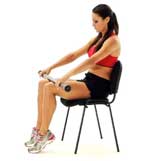
This is a gentle exercise that will strengthen the soleus muscle which is the smaller muscle lower down. This is also an early-stage rehab exercise as it can be done with no weight at all, to begin with, if necessary.
- Sit on a chair with the knees bent and lift your heels off the ground as high as possible.
- Resting a weight on the knees will increase the resistance.
- Start with 2 sets of 10 once a day and increase a little every two or three days when you are sure there has been no adverse reaction (pain).
Calf raise
- Stand on a step with the heels off the back of the step making sure you have something to hold onto for balance. Lower the heels just below the step then raise up onto tiptoes.
- Start with 2 sets of 10 reps provided it is pain-free and gradually build up to 3 sets of 20 reps. If after a few days this feels easy, transfer more of your weight on to the injured leg and then go on to single leg calf raises.
- This exercise can also be done leaning against a wall if a suitable step is not available.
Step back calf exercise
This exercise is more suitable for the later stages of rehabilitation when the athlete is attempting to return to more specific sports training.
- The athlete steps back and then in one movement step back onto the step.
- This is a more explosive, plyometric exercise related to the specific demands of sport.
- It works the calf muscle eccentrically during the stepping back phase and plyometrically as they push off. The athlete should be capable of normal running before starting this exercise.
- Alternate so both legs are exercised and do not do any more on the good leg than you can achieve with the injured leg.
